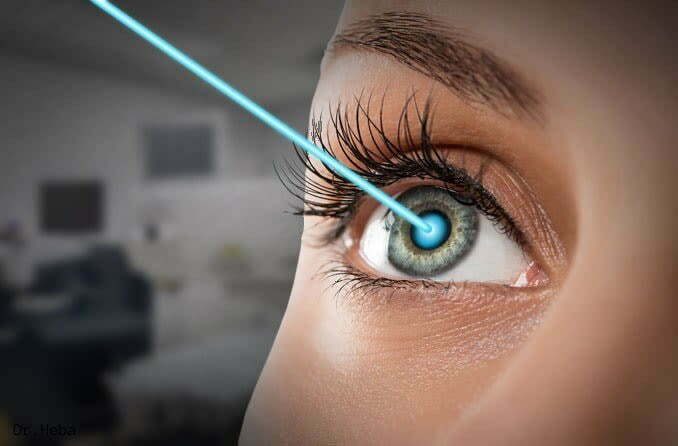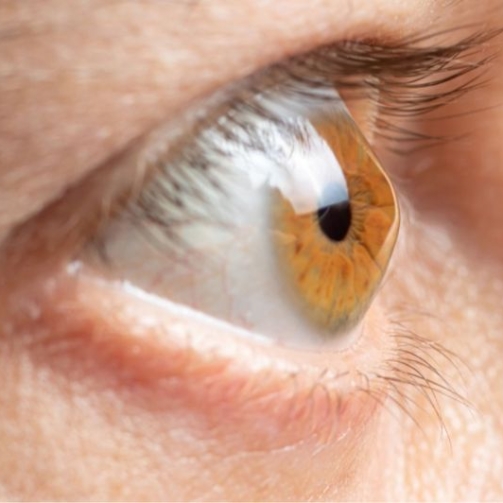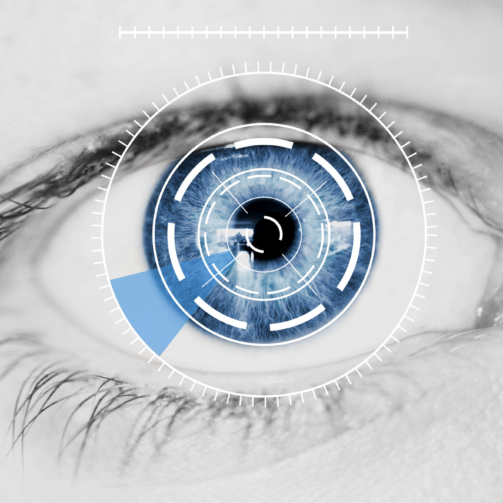Laser vision correction operations
There are many laser vision correction procedures and operations depending on the increasing vision and vision problems. Although many patients may suffer from a decline in the quality of their vision, each of them may undergo a completely different treatment procedure from the other. What are the most important operations used for laser vision correction? What is the difference between them? This is what we will learn about in today’s article with Ophthalmology Consultant Dr. Nour El-Din Al-Hussein, the best ophthalmologist in Egypt, for many reasons that we will explain to you in the following lines.
A Warm Welcome from Dr. Nour El Din Hussein’s Eye Care Center
We wish you a pleasant experience at Dr. Nour El Din Hussein’s Eye Care Center.
What are laser vision correction operations?
Laser vision correction operations are considered one of the most widespread medical procedures in the Arab world and abroad. It has been subject to many scientific studies and research since its inception and has proven to be very effective in treating millions of cases. It was approved by the International Food and Drug Administration (FDA) in the nineteenth century.
Over time, techniques for treating vision problems developed, and the concept of laser vision correction no longer follows only one type. Rather, there are many types of laser vision treatment depending on the depth of its reach to the cornea and other parts of the eye. These techniques include: LASIK, Femto-LASIK, Femto-Smile, Surface Laser, and Contour. LASIK and custom LASIK.
But before explaining the details of each of the laser techniques to correct vision problems, we must recognize these problems that require laser eye operations. Let us learn about them in the following paragraph.
Common vision problems treatable with laser
Patients often resort to laser vision correction operations when glasses or contact lenses become a source of inconvenience for them, or even when these methods are not effective in controlling vision problems and do not reach the desired quality of vision in a way that affects the patient’s lifestyle, and one of the most important vision problems that This requires resorting to laser correction. We mention to you:
- Myopia: A medical condition in which light entering the eye is focused in front of the retina, which leads to difficulty seeing distant objects clearly, and the need to bring objects closer to see them clearly, and requires a specialized laser to correct the focus of the light beam on the retina.
- Hypermetropia: Hypermetropia is often observed when reading, as it leads to the inability to see close objects clearly, the need for the dimensions of objects to clarify their image, and requires correction of the projection of the light beam to the retina as well.
- Astigmatism: A deformity in the outer surface of the cornea that results in incorrect light shining on the retina and thus difficulty and confusion in seeing both near and far objects.
Conditions for performing laser vision correction operations
There are fixed criteria that must be met by the patient in order to refer him to one of the laser vision correction operations. These conditions guarantee the success of the operation and the achievement of the best stable results in the long term, God willing, and they can be clarified as follows:
- The patient must be over 21 years old to ensure stable degrees of nearsightedness or farsightedness.
- Pregnant and breastfeeding women cannot undergo the procedure.
- The cornea must be healthy and not cone-shaped, dry, fibrous, or opacified.
- Patients with diabetes and other chronic diseases can undergo the procedure.
- There are no degrees of vision problems with very large differences between the two eyes.
- Not suffering from any autoimmune diseases such as lupus erythematosus.
Types of laser vision correction operations
The concept of laser includes dozens of types and advanced technologies that are still in the midst of innovation to this day. Let us learn about the most prominent of these technologies available at the Dr. Nour El-Din Al-Hussein Center, which have received positive opinions and thousands of 100% successful experiments in treating refractive vision problems, thanks to God:
·LASIK
The regular LASIK technique works to repair the cornea of the eye without removing any of its parts, whether the upper or inner layers, by making a fold in the cornea of the eye using specialized surgical tools. This fold is a very thin outer shell of the cornea that is made using a device called a “microscopic” Keratome: Raising this layer, which we call the fold, allows laser beams to pass to the inner layers of the cornea to correct its deformities, This procedure has no annoying side effects and vision improves within a few hours.
·FEMTOLASIK
The Femto-LASIK procedure is considered one of the safest and most modern procedures, as it does not include any surgical procedures with mechanical medical scalpels as in the previous technique. Rather, the layers of the cornea are separated using a femtosecond laser, which makes the fold, and then the shape of these layers is modified through the excimer device. Laser to correct all refractive vision problems.
·FEMTO-SMILE
The most effective option for patients with severe myopia or thinning of the cornea, as the inner layers of the cornea are separated and taken out through a femto-laser device without the need to make a fold in the cornea with surgical tools or a laser.
·Surface laser(PRK)
The superficial laser procedure aims to correct the shape of the cornea by making a superficial surgical incision on the cornea using a surgical scalpel called “Trephine,” and then excimer laser rays are directed at the inner corneal tissue, where it works to eradicate the epithelial cells located on the surface layer of the cornea.
·CONTOURA VISION LASIK
This technology is based on the principle of corneal imprinting, in which vision distortions resulting from changes and curvature of the outer surface of the cornea are corrected to improve the quality of vision, by modifying 22,000 points on the surface of the cornea to reach the highest possible visual acuity for some cases.
·الكاستم ليزك (CUSTOM LASIK)
It is also called “Femto-Custom LASIK Technology” and is based on the principle of the eye print, in which visual distortions are measured through the eye print (the iris print and the front wave print of the entire eye) to generate a laser profile specific to each individual patient, and it is the best technology to enhance the quality Night vision, increasing contrast, and correcting high-order aberrations
Stages of laser eye correction operations
Despite the many techniques and operations for laser vision correction, the common factor between all of these operations is the final steps. They all ultimately aim to correct the shape of the cornea and correct the refraction of the light ray on the retina. Therefore, the internal steps can differ slightly between these operations, but the mechanism The general one is as follows:
·Before the operation
In the beginning, refractive vision problems are diagnosed accurately using the latest devices and technologies at Dr. Nour El-Din Al-Hussein Center, while identifying the medical and family history of each patient.
After confirming the presence of a vision problem, the appropriate type of laser operation is determined according to what Dr. Nour El-Din deems appropriate based on his deep experience and skill. The patient is also informed of all the details of the operation.
Several days before the operation, the patient is instructed to stop wearing glasses or contact lenses, in order to review the degree of refractive vision problems and correct them optimally. Corneal thinning, glaucoma, dehydration, and any other deformities in the surface of the cornea that limit the operation are excluded.
The doctor also recommends that patients stop taking some medications, such as anticoagulants, some antibiotics, and painkillers to avoid any complications during treatment. He also directs patients to stay away from cosmetics, perfumes, and creams to avoid eye irritation or bacterial infection.
·The stage of performing the laser vision correction procedure
Any laser vision correction operation begins with the careful sterilization of clothing, instruments, and the operating room. The eye that will be subjected to the therapeutic procedure is then anesthetized using local anesthetic drops. The doctor covers the patient’s face with a medical cover that is open from where the eye is.
If the operation requires making a fold in the cornea of the eye, Doctor Nour El-Din performs it using surgical tools, which are a very precise surgical incision in the outer surface of the eye.
After that, the doctor asks his patient to observe the intermittent red or green light that is indicated and follow it with his eye. Meanwhile, the laser light that the patient looks at works to reshape the cornea and refractive defects are repaired accurately and effectively within a few seconds.
The doctor then removes the cover from the patient’s face, and a special solution may be used to wash the eye, then cover the fold he made initially and leave it to dry for a few minutes, so that the entire process is completed within a few minutes.
·After the operation
The patient can leave Dr. Nour El-Din Al-Hussein Center a few minutes after the operation. He must have a companion next to him because he is prohibited from driving in the first days. It is also preferable to have physical and visual rest at the end of the day.
Doctor Nour El-Din advises the patient to avoid lifting or removing the eye bandage on the first day after the operation at all, and dictates to him a set of instructions and directives, which contain a direct explanation that vision in the first days after the operation may be blurry and distorted, and this is completely normal, but within a few days it will become Visibility is excellent.
How to determine the most appropriate laser vision correction procedure
The experience and professional competence of Dr. Nour El-Din – the best ophthalmologist in Egypt – is the first factor in choosing the appropriate operation for the patient’s condition, and the record of laser vision correction operations, which has exceeded thousands, attests that Dr. Nour El-Din Al-Hussein Center has today become a beacon for eye healing to which patients from all countries turn. In addition, the decision to choose the type of vision correction surgery includes examinations and differential diagnostic methods that guarantee the complete treatment of the patient’s condition. The most important of these methods are:
- Determine the degrees of refractive vision problems with great accuracy and determine the axis of astigmatism in the event of it.
- Completely exclude corneal and eye diseases.
- Measuring the thickness of the cornea of the eye.
- Creating a topographical drawing of the cornea using a pentacam camera, to photograph the topography of the front and back surfaces of the cornea and determine their degree of regularity.
- Make a map of the patient’s visual distortions and use the “wavefront” device to take an eye print and diagnose its problems.
- Matching the pupil diameter with the axes of the cornea.
The cost of laser vision correction in 2025
The costs of laser vision correction procedures vary depending on each type, of course. According to many side factors that the patient must be aware of, these factors include:
- Laser technology used to treat vision problems and the extent of its development.
- The development of the laser device and the additional advantages it offers to the patient, such as painlessness, speed, and effectiveness.
- The readiness of the medical clinic or hospital in terms of the development of its equipment, sterilization, and services.
- The experience of the ophthalmologist, his professional competence, and the number of years of his work in the field of ophthalmology and surgery.
- Post-procedure service, following up on the patient and ensuring his condition improves.
The best doctor for laser vision correction in Egypt
In fact, the long years of study and training in the most prestigious Arab and European universities, professional work in the ophthalmology sector for dozens of years, and obtaining dozens of positions within the Egyptian and European societies specialized in various studies of ophthalmology and surgery, Even joining the fellowship of the Royal College of Ophthalmic Surgeons and joining the staff of the prestigious Ain Shams University to teach ophthalmology courses in the Faculty of Human Medicine, the result of which was nothing but the name of a brilliant and brilliant ophthalmologist, Dr. Nour El-Din Al-Hussein, a consultant in ophthalmology and surgery, one of the elite ophthalmologists in the Arab Republic of Egypt. .
Today, Dr. Nour El-Din’s name stands out as the first destination for eye patients from all over the world. Patients see his medical center as a gateway to hope and healing to see the world in a more beautiful way. During his years of work, Dr. Nour El-Din dealt with the most difficult and complex cases, but they culminated in a complete recovery, thanks to God.
He did not stop here, as Dr. Nour El-Din Al-Hussein adopted the latest technologies and therapeutic methods in his medical center to be at the forefront of Arab ophthalmologists. He also participated in the most important international ophthalmology conferences with his achievements and innovative research to be Egypt’s medical voice around the world.
The most important questions about laser vision correction operations
We receive dozens of questions daily regarding laser vision correction operations to the Dr. Nour El-Din Al-Hussein Center’s mailbox. Some of these questions are very important and must be answered clearly to enhance patients’ awareness of these procedures. Here are their details:
-What are the most important instructions after laser vision correction operations?
In addition to protecting the eye and not removing the sterile bandage from it. There are many additional tips that Dr. Nour El-Din Al-Hussein recommends to his patients, including:
- Avoid washing the eye for 3 days after the procedure.
- Completely avoid swimming during the first month after the laser procedure.
- Commitment to applying medicinal drops in the eyes at the specified times and doses.
- Visual comfort by not straining with electronic devices, reading, or bright lights.
- Do not scratch or rub the eye after the procedure.
- Avoid strenuous sports, lifting weights, or any other sport that causes eye strain.
-What is the best type of laser vision correction surgery?
It cannot be said that any laser operation is the best operation, but for every medical condition there is an appropriate procedure for it and therefore it is preferred for its vision problems. According to what we have seen, the multiple problems of refractive vision require multiple treatment methods. Therefore, the choice of Doctor Nour El-Din Al-Hussein is decisively appropriate for the patient’s condition.
-Do laser vision correction surgeries cause pain?
Laser vision correction procedures are considered very simple. They are performed under local anesthesia without injecting the patient with any solutions or painkillers. As for the patient’s feeling during the procedure, it is limited to feeling slight pressure for several seconds. After the procedure, the patient may feel a slight burning and tingling in his eye for several hours, which disappears. These symptoms disappeared completely the next day.
-What is the appropriate age to undergo laser vision correction?
The most appropriate age for Ayman to undergo laser vision correction operations ranges between 18 and 21 years. This is because the degrees of refractive vision problems largely stabilize at this age. Thus, the patient avoids the possibility of undergoing another LASER procedure again.
This operation can be performed for the elderly, provided that they do not suffer from eye diseases such as: cataracts and glaucoma. On the other hand, laser vision correction surgery can be performed for children in one case, when the child suffers from high degrees of short-sightedness or long-sightedness in only one eye, not the other. In the other case, laser vision correction is used to avoid developing a pixel in the second eye.
– What is the time required to undergo laser vision correction?
The treatment procedure itself does not take more than 5 minutes, but preparing the patient, anesthetizing him locally, and giving him instructions until the end of the procedure can take up to 15-20 minutes.
Here we come with you to the conclusion of this distinguished article, which was entitled “Laser Vision Correction Operations”, where we learned about the types of refractive vision defects, methods of treating them, and the stages of performing a vision correction operation. We also referred to the best doctor in Egypt to perform laser vision correction operations, which is Dr. Nour El-Din Al-Hussein is a beacon of knowledge and brilliance in the Arab ophthalmology sector. In conclusion, we answered the most important inquiries related to these operations, hoping that you have obtained the desired benefit. May you be well.





